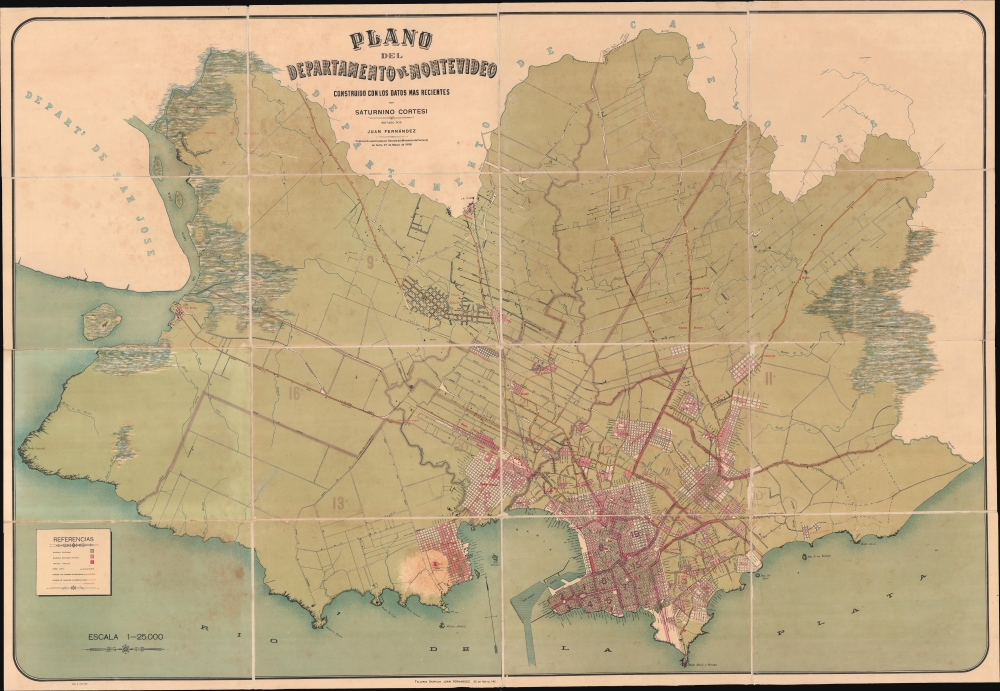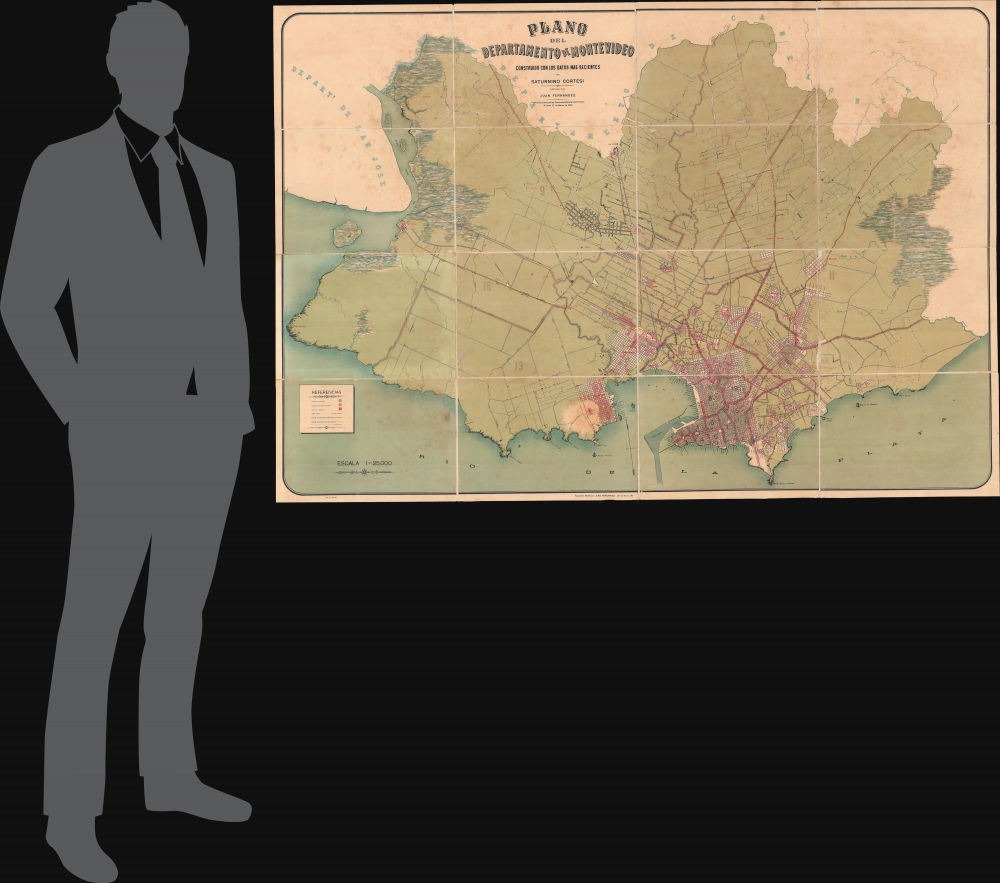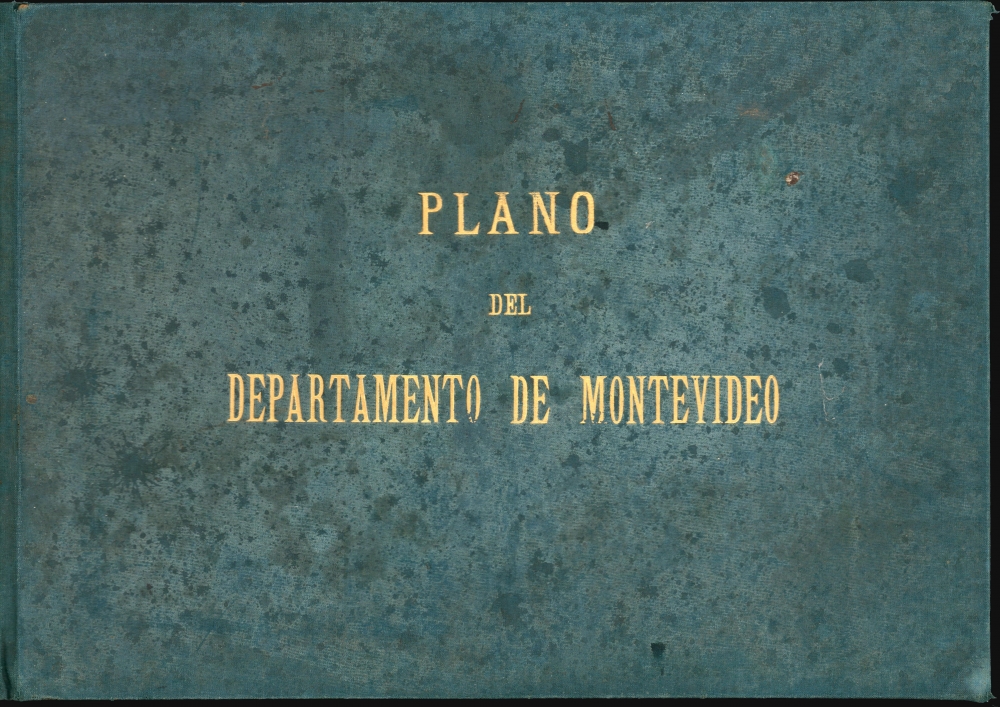This item has been sold, but you can get on the Waitlist to be notified if another example becomes available, or purchase a digital scan.
1906 Cortesi Large-Scale map of Montevideo, Uruguay
Montevideo-cortesi-1906
Title
1906 (dated) 42 x 61 in (106.68 x 154.94 cm) 1 : 25000
Description
A Closer Look
The map embraces the full Department of Montevideo. Development radiates out from the urban center, with the rural areas extending into the interior. The Referencias' (key), in the lower left corner, details stages of development across various new barrios, including: Manzanas Edificadas (gray: fully built-up blocks); Manzanas Edificadas en Parte (pink: partially built-up urban blocks); and Edificios Públicos (red: public buildings). It also notes infrastructure, including the Ferro Carril (railroads), Caminos de Macadam ó Empredados (macadamized roads), Caminos de Macadam en Construccion (macadamized roads under construction), and Limites de las secciones judiciales (boundaries of judicial districts). Around the borders there are several beautifully rendered Bañados (swamps).Historical Context
Founded by the Spanish in 1724, Montevideo, Uruguay's capital, underwent transformative growth in the late 19th and early 20th centuries. After enduring the tumultuous Guerra Grande (1843 - 51), the city embraced modernization, connecting to the rest of the country through railways by 1869 and establishing several new neighborhoods. By the early 20th century, under President José Batlle y Ordoñez's leadership from 1903, Montevideo experienced a golden era marked by an influx of European immigrants, a doubling of its population to 500,000 by 1930, and a construction boom that shaped its modern identity.Chromolithography
Chromolithography, sometimes called oleography, is a color lithographic technique developed in the mid-19th century. The process involved using multiple lithographic stones, one for each color, to yield a rich composite effect. Oftentimes, the process would start with a black basecoat upon which subsequent colors were layered. Some chromolithographs used 30 or more separate lithographic stones to achieve the desired product. Chromolithograph color could also be effectively blended for even more dramatic results. The process became extremely popular in the late 19th and early 20th centuries when it emerged as the dominant method of color printing. The vivid color chromolithography produced made it exceptionally effective for advertising and propaganda imagery.Publication History and Census
This map was commissioned in 1904 by the Uruguayan government, compiled by Saturnino Cortesi, then printed in 1906 in Montevideo by Talleres Gráficos Juan Fernández. It is extremely rare. We note examples only in the David Rumsey Collection and at the University of Wisconsin-Milwaukee.CartographerS
Saturnino Cortesi (fl. c. 1900 - 1925) was a Uruguayan geographer active in the late 19th and early 20th century. In 1903 he, along with Anibal Méndez, was commissioned by the president of Uruguay, José Batlle y Ordoñez, to compile a large-scale official national map of Uruguay. He also issued a large wall map of the department of Montevideo in 1906. In addition, he published educational geographical texts in 1905 and 1908. More by this mapmaker...
Juan Fernández (fl. c. 1900 - 1911) was a Uruguayan lithographer based in Montevideo. His firm, Talleres Gráficos Juan Fernández produced some of the most significant maps of Uruguay and Montevideo in the 19th century, including Saturnino Cortesi's definitive official plan of that city. The firm specialized in graphic printing, chromolithography, and photolithography. Learn More...






